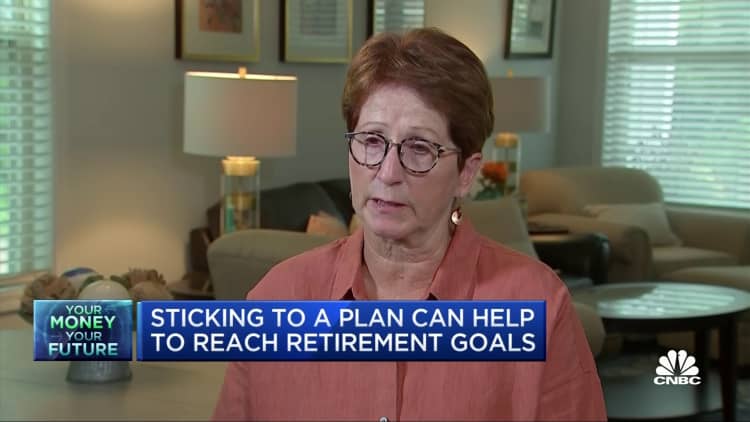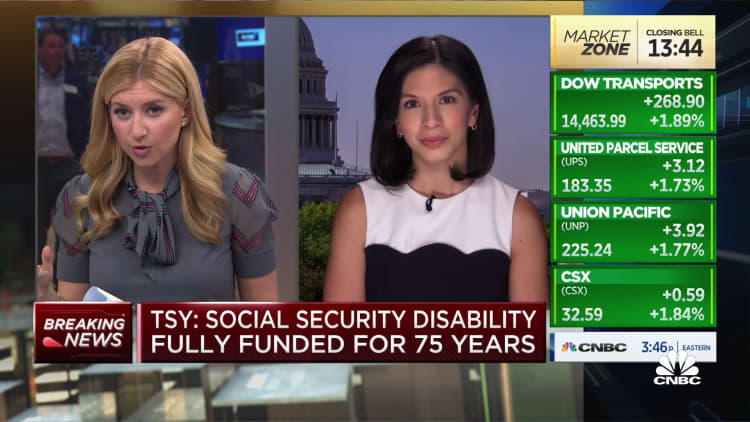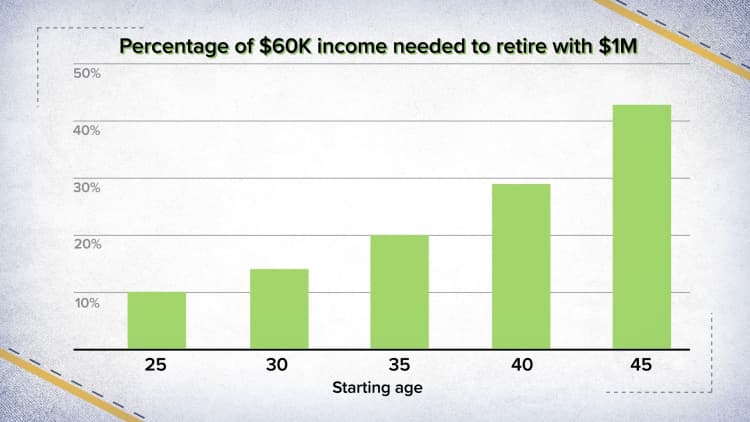Siriporn Wongmanee / Eyeem | Eyeem | Getty Images
The U.S. has a ‘patchwork retirement design’
Iceland topped each lists. Among different components, the nation delivers beneficiant and sustainable retirement advantages to a big share of the inhabitants, has a low stage of old-age poverty, and has the next relative diploma of retirement revenue equality, in keeping with the experiences, which use totally different methodologies.
Other nations, together with Norway, the Netherlands, Switzerland, Denmark, Australia, Ireland and New Zealand, additionally acquired excessive marks. For instance, Denmark, Iceland and the Netherlands every acquired “A” grades, in keeping with Mercer’s index.
More from Personal Finance:
6 money tips from pro athletes Isaiah Thomas and Dexter Fowler
How the top financial habits of ‘super savers’ can help build wealth
5 ways to save amid record food price inflation
Where the U.S. largely lags behind those countries, experts said, is that its retirement system isn’t set up so that everyone has a chance at a financially secure retirement.
“Even though we have $40 trillion invested, it’s a very uneven, fragmented, patchwork retirement design that we work with in the U.S.,” said Angela Antonelli, executive director of the Center for Retirement Initiatives at Georgetown University. “Some people do very, very well but a lot of other people are left behind.”
Consider this statistic: Just three of the 38 countries in the Organization for Economic Co-operation and Development rank worse than the U.S. in old-age revenue inequality, in keeping with the bloc of developed nations.
Indeed, poverty charges are “very high” for Americans 75 years and older: 28% within the U.S. versus 11%, on common, within the OECD.
Many Americans haven’t got office retirement plans
The U.S. retirement system is usually referred to as a “three-legged stool,” which consists of Social Security, office preparations reminiscent of pensions and 401(ok) plans, and particular person financial savings.
One of the construction’s major shortfalls is an absence of entry to office financial savings plans, in keeping with retirement specialists.
Just over half — 53% — of U.S. employees had entry to an employer-sponsored retirement plan in 2018, in keeping with a current estimate by John Sabelhaus, a senior fellow on the Brookings Institution and adjunct analysis professor on the University of Michigan. That’s an enchancment from practically 49% a decade earlier, he discovered.
Even although we’ve $40 trillion invested, it is a very uneven, fragmented, patchwork retirement design that we work with within the U.S.
Angela Antonelli
govt director of the Center for Retirement Initiatives at Georgetown University
Approximately 57 million Americans fell within the retirement financial savings protection “gap” in 2020, that means they did not have entry to a office plan, in keeping with a Center for Retirement Initiatives analysis.
The U.S. has a voluntary retirement financial savings system. The federal authorities does not require people to save lots of, or companies to supply a pension or 401(ok). Individuals additionally shoulder extra private accountability to construct a nest egg as companies have largely transitioned away from pension plans.
By distinction, 19 developed nations require some stage of protection, by mandating companies supply a retirement plan, that people have a private account, or some mixture of the 2, in keeping with OECD data. In 12 of the nations, the preparations cowl greater than 75% of the working-age inhabitants. In Denmark, Finland and the Netherlands, for instance, the share is close to 90% or extra.
In Iceland, the place protection is 83%, the private-sector retirement system “covers all employees with a high contribution rate that leads to significant assets being set aside for the future,” Mercer wrote.
IRAs aren’t a catchall for employees and not using a 401(ok)
Of course, folks within the U.S. can save for retirement exterior the office — in a person retirement account, for instance — if their employer does not supply a retirement plan.
But that usually does not occur, Antonelli stated. Just 13% of households contributed to a pre-tax or Roth IRA in 2020, in keeping with the Investment Company Institute.

IRAs held practically $14 trillion in 2021, virtually double the $7.7 trillion in 401(ok) plans. But most IRA funds aren’t contributed instantly — they had been first saved in a office retirement plan after which rolled into an IRA. In 2019, $554 billion was rolled into IRAs — more than seven times the $76 billion contributed directly, according to ICI data.
Lower annual IRA contribution limits additionally imply people cannot save as a lot annually as they’ll in office plans.
Americans are 15 occasions extra more likely to stash away retirement funds once they can accomplish that at work by way of payroll deduction, according to AARP.
“Access is our No. 1 issue,” Will Hansen, chief authorities affairs officer on the American Retirement Association, a commerce group, stated of office retirement financial savings. Employees of small companies are least more likely to have a 401(ok) obtainable, he added.
“[However], the retirement system is actually a good system for those who have access,” Hansen stated. “People are saving.”
But the retirement safety provided by that financial savings is tilted towards high-income households, in keeping with federal knowledge.
Low earners, in contrast, “appear more prone to having little or no savings in their [defined contribution] accounts,” the Government Accountability Office wrote in a 2019 report. A 401(ok) plan is a kind of outlined contribution plan, whereby traders “define,” or select, their desired financial savings charge.
Just 9% of the underside quintile of wage earners have retirement financial savings, versus 68% of middle-income earners and 94% of the highest quintile, in keeping with a Social Security Administration report from 2017.
Overall financial savings are additionally “constrained” by low wage progress after accounting for inflation and growing out-of-pocket prices for gadgets reminiscent of well being care, the GAO stated. Longer lifespans are placing extra strain on nest eggs.
Social Security has some structural points
Social Security advantages — one other “leg” of America’s three-legged stool — assist make up for a shortfall in private financial savings.
About 1 / 4 of senior households depend on these public advantages for no less than 90% of their revenue, according to the Social Security Administration. The average month-to-month profit for retirees is about $1,600 as of August 2022.
“That doesn’t put you much above the poverty level,” Antonelli stated of Social Security advantages for folks with little to no private financial savings.

There are additionally some looming structural points with the Social Security program. Absent measures to shore up its financing, advantages for retirees are anticipated to fall after 2034; at that time, this system would be capable to pay simply 77% of scheduled funds.
Further, people can raid their 401(ok) accounts in occasions of monetary misery, inflicting so-called “leakage” from the system. This capability can infuse much-needed money into struggling households within the current, however could topic savers to a shortfall later in life.
The “leakage” issue, coupled with comparatively low minimal Social Security advantages for decrease earners and the projected shortfall of the Social Security belief fund, “will have a significant impact on the ability for the U.S. pension system to adequately provide for its retirees in the future,” stated Katie Hockenmaier, U.S. outlined contribution analysis director at Mercer.
‘There’s been an amazing quantity of progress’
Of course, it may be powerful to match the relative successes and failures of retirement methods on a world scale.
Each system has advanced from “particular economic, social, cultural, political and historical circumstances,” in keeping with the Mercer report.
“It’s hard to state the U.S. is really far behind when there are so many other external policies countries make that impact their citizens and how effective their retirement will be in the long run,” Hansen stated.
Flaws in health-care and schooling coverage bleed into folks’s capability to save lots of, Hansen argued. For instance, a excessive scholar debt burden or massive well being payments could trigger an American borrower to defer saving. In such instances, it is probably not honest to put major blame on the construction of the U.S. retirement system, Hansen stated.

And there have been structural enhancements in recent times, specialists stated.
The Pension Protection Act of 2006, for instance, ushered in a brand new period of saving, whereby employers began mechanically enrolling employees into 401(ok) plans and growing their contribution quantities annually.
More just lately, 11 states and two cities — New York and Seattle — have adopted applications that require companies to supply retirement applications to employees, according to the Center for Retirement Initiatives. They might be 401(ok)-type plans or a state-administered IRA, into which employees could be mechanically enrolled.
Federal lawmakers are additionally weighing provisions — reminiscent of lowered prices relative to components like plan compliance and a lift in tax incentives — to advertise extra uptake of 401(ok) plans amongst small companies, Hansen stated.
“In the past 15 years — and now with considerations of additional reform in Secure 2.0 [legislation] — there’s been a tremendous amount of progress in recognizing there’s room for the improvement of design of our U.S. retirement system,” Antonelli stated.

